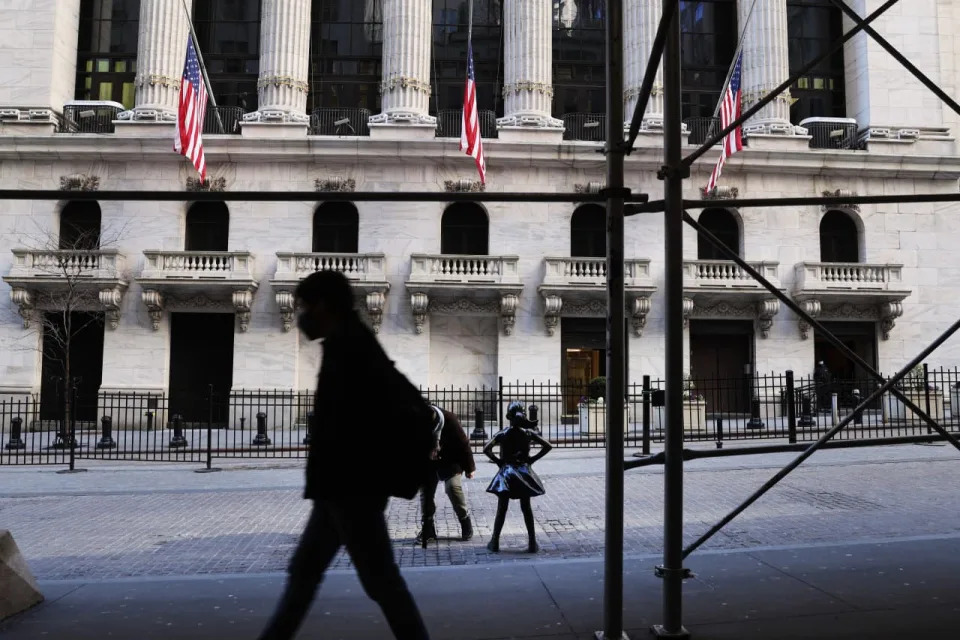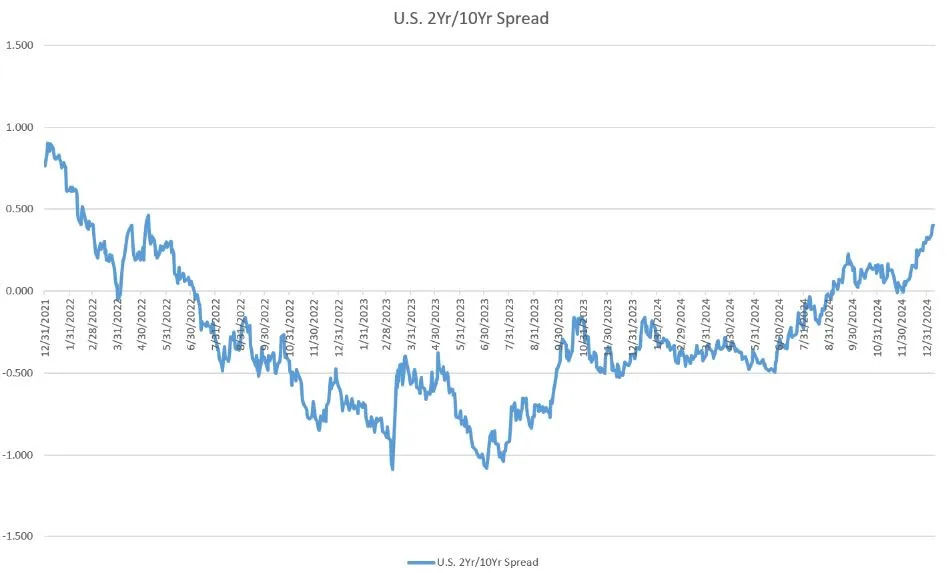
Rising Treasury yields are ratcheting up the anxiety for equity investors. Thursday’s stock-market closure offered only a brief reprieve from the mounting tension.
After a day off in honor of former President Jimmy Carter’s national day of mourning, traders will return to their desks on Friday. It won’t take long until they’re forced to confront the first major U.S. economic report of 2025, as the December jobs data will be released at 8:30 a.m. — one hour before the opening bell.
The data will land at a particularly precarious time for stocks. The yield on the 10-year Treasury yield touched its highest level since April 25 on Wednesday, according to Dow Jones Market Data. And the pace at which yields have been climbing lately has stoked anticipation that the 10-year might be headed toward 5%.
At the same time, short-term yields have remained anchored, causing the spread between the 10-year BX:TMUBMUSD10Y and 2-year Treasurys BX:TMUBMUSD02Y to reach their widest level since late 2022, according to Dow Jones Market Data.

Market watchers have blamed the steepening yield curve for creating problems for stocks.
“The fear of yields rising further is a material threat to equities in an environment where equities and bonds are positively correlated,” Jordan Rizzuto, chief investment officer and managing partner at GammaRoad Capital Partners told MarketWatch Thursday.
See: Why a 5% 10-year Treasury yield could be a buying opportunity
The U.S. equity market has been wobbling for more than a month now, with much of the weakness following the Federal Reserve’s December meeting, where the central bank telegraphed its intentions to slow the pace of interest-rate cuts in 2025.
As of Wednesday’s close, the S&P 500 SPX was down 2.8% from its record close of 6,090.27 on Dec. 6, according to Dow Jones Market Data.
That might not seem like a lot. But looking under the hood of the index offers a more downbeat picture. On Tuesday, the share of S&P 500 stocks trading above their 200-day moving average shrank to 51.9% — the lowest since November 2023, according to Dow Jones data. That only improved slightly on Wednesday.
And as Willie Delwiche, founder of Hi Mount Research, pointed out in a post on X, the social-media platform formerly known as Twitter, the median stock in the S&P 500 is faring far worse than the index as whole, with a decline of 12.4% from its 2024 peak. Meanwhile, one-quarter of the stocks in the index are down 20% or more from their highs.
Outside of the large-cap space, the price action has been even more dismal. The Russell 2000 RUT, an index of small-cap stocks, is down more than 8% from its record closing high in November.
On Wednesday, speculative stocks — like those associated with quantum computing and other themes that have seen an explosion of interest from mostly retail investors over the past few months — experienced a wipeout.
“A lot of that is very indicative of late equity-market cycle behavior,” GammaRoad’s Rizzuto said.
Depending on what the data show, Friday’s jobs report could further diminish demand for stocks or save the S&P 500 from another weekly loss.
See: Wall Street’s riskiest stocks are melting down as retail traders face ‘day of reckoning’
It will likely hinge on the strength of the headline number, said Jose Torres, senior economist at Interactive Brokers. Much of the market’s gains from the past two years can be chalked up to investors’ celebrating the resilience of the U.S. economy.
But as signs mount that the hot economy might contribute to higher bond yields, investors could be facing a dynamic known on Wall Street as “good news is bad news” — meaning that good news for the economy is bad news for the stock and bond markets.
So any signs that the U.S. labor market has largely continued to resist the pull of higher interest rates could add more upward pressure on yields, potentially weighing on stocks. The Fed has cut its target by 100 basis points since September after raising it at the fastest pace since the early 1980s in 2022 and 2023.
“If you get a hot number and the unemployment rate stays the same, you could see the 10-year yield go to 4.80% and the S&P 500 down as much as 2%,” Torres said. In Torres’s view, a hot number would be any reading north of 200,000.
Wall Street forecasters are expecting the data to show that 160,000 jobs were created last month.
See: December jobs report forecast is 155,000. But here’s the number investors really should watch.
Readings on average hourly earnings and the unemployment rate could also influence investors’ interpretation of the data. If wage growth looks too strong, or the unemployment rate remains steady or even ticks lower, that could be enough to inspire investors to dump stocks, Torres said.
On the other hand, a surprisingly weak jobs number could give equity investors a temporary reprieve, potentially allowing the S&P 500 to avoid a weekly loss. But Tom Essaye, founder and president of Sevens Report Research, believes the sense of relief spurred by a weak number likely wouldn’t last. This further underlines the risks facing investors from Friday’s data.
“Stocks could see an immediate relief rally on a ‘bad data is good because it ensures Fed rate cuts,’ but we don’t think that’d be sustainable,” Essaye said in commentary shared with MarketWatch.
To be sure, economic data aren’t the only factor influencing the bond market. Apollo economist Torsten Slok pointed out in a report shared with MarketWatch earlier this week that the rise in long-end Treasury yields has been “very unusual” considering that they have risen at the same time as the Fed has been pushing its short-term policy interest-rate target lower.
“Is it fiscal worries? Is it less demand from abroad? Or maybe Fed cuts were not justified? The market is telling us something, and it is very important for investors to have a view on why long rates are going up when the Fed is cutting,” he said.
Others have blamed a rising term premium, a theoretical economic indicator that aims to reflect the additional premium demanded by investors for bearing the additional interest-rate and maturity risk that comes with holding longer-dated bonds.
The expectation that inflation could be more stubborn than previously expected, or that perennial U.S. budget deficits could push yields higher, could be contributing to the higher premium, bond-market experts have said.
After Friday’s jobs report, investors will face another challenge next week, when the latest inflation data for December are released.






